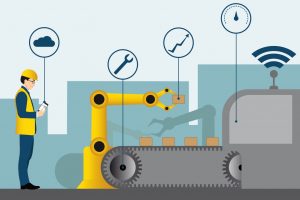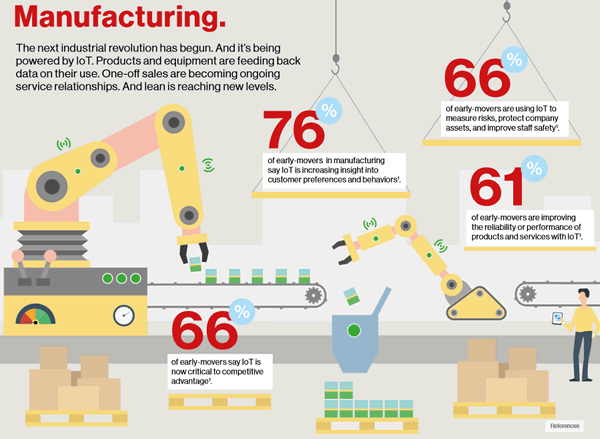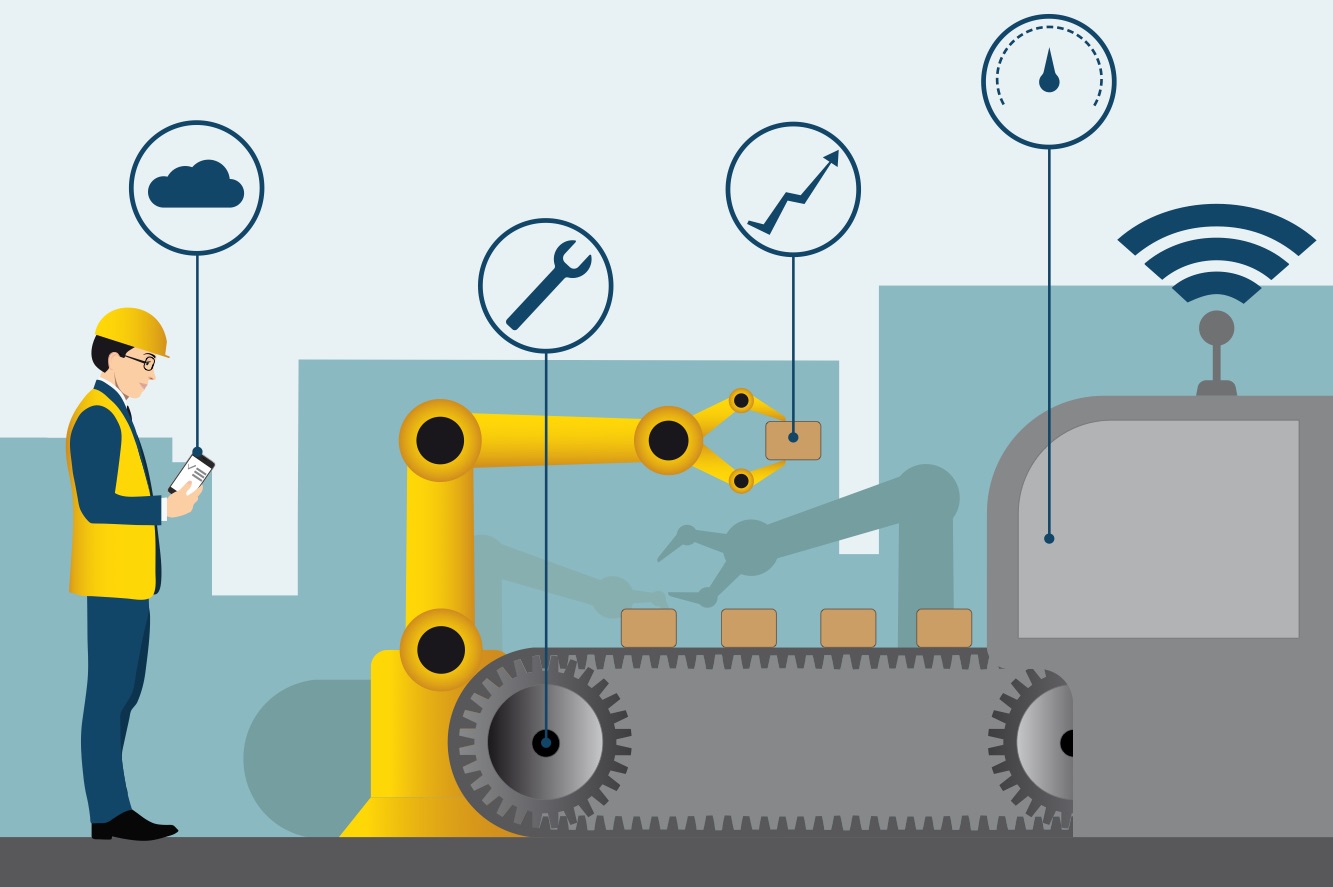Currently, IoT is a leading industry in business technology and manufacturing is its top investor. Investments in manufacturing IoT hit $29 billion in 2015, according to a BI Intelligence report. By 2020, those investments will rocket to $70 billion.

Most people associate IoT centered on human interaction with interconnected devices, targeting consumer convenience. These devices provide fast solutions when a situation occurs, alerting the user, along with monitoring activities and remote control. Think about the phone app that allows you to turn off your living room lights when you’re away, or alerts you to a break-in through your security system. But, as author Dave Turbide pointed out, IoT is quite another thing when relating to manufacturers. Also called Industrial Internet of Things (IIoT), it provides the same interactions but on a more sophisticated level.
Take GE’s Predix, a leading creator of manufacturing IoT. Predix strives for system wide optimization by engineering a Cloud-based operating system that can extend to industrial automation. Imagine you have an IoT solution that allows you to track shipments along with the truck’s route and mileage. Predix would take that information, combine it with data collected from other company trucks, and utilize insights. If one driver has hit heavy traffic, Predix could alert others on a similar route and redirect to save time.
Tracking assets is a common use for IIoT, especially within distribution centers, delivering constant visibility during every step of a product’s journey. However, creating a smart factory doesn’t limit this technology for one purpose. Other common uses for IIoT include:
- Operations and logistics
- Safety and security
- Maintenance updates
- Autonomous robots

Challenges with IIoT
With all new technology, there are certain barriers. One of the top concerns is cyber security; investors also have difficulty determining ROI, and there’s an overall reluctance for automation due to potential job losses.
While IIoT is meant to improve industrial automation, much of it is to compensate for tasks that are considered dangerous to the workers, or improve processes under human eyes. The continuing growth of this industry means there are new ways to combat threats to the system. On top of that, according to Verizon’s 2016 report on IIoT, an average of 67 percent of manufacturing leaders who incorporated IoT at an early stage, found measurable benefits in their integrated processes. From measuring risks, to improving equipment performance, to broadening insights into behaviors of consumers, IIoT is technology that’s propelling businesses into a next industrial revolution.
You might also like
Stay ahead in tech with Sunflower Lab’s curated blogs, sorted by technology type. From AI to Digital Products, explore cutting-edge developments in our insightful, categorized collection. Dive in and stay informed about the ever-evolving digital landscape with Sunflower Lab.






